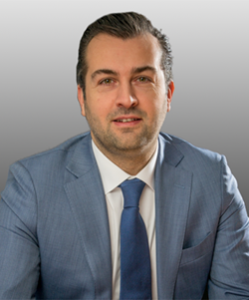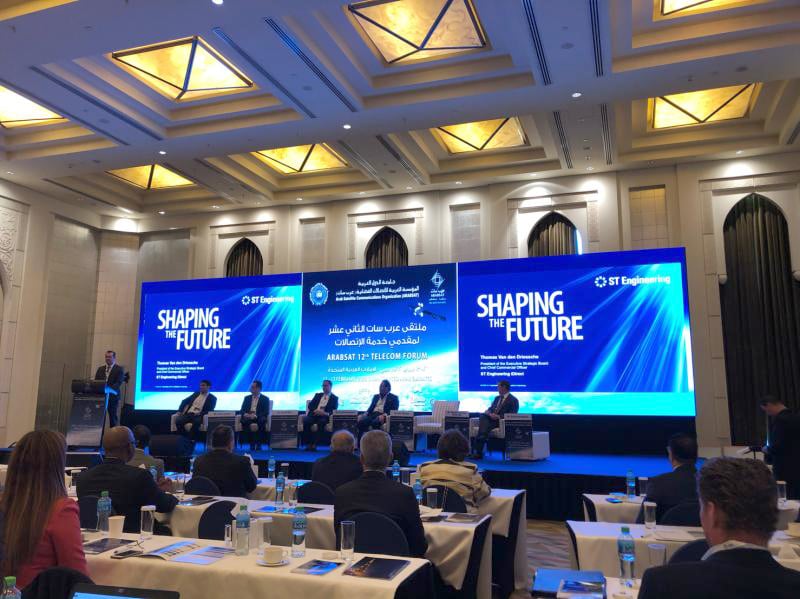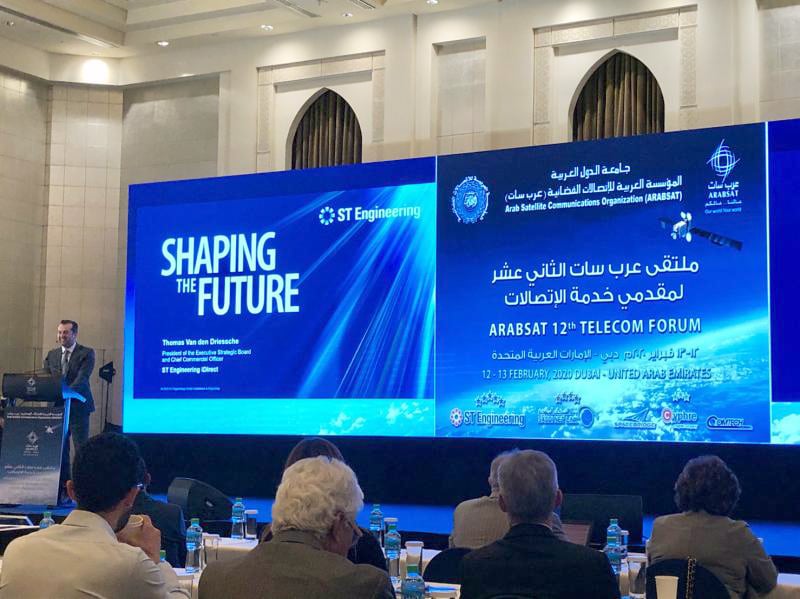
Last week, Thomas Van den Driessche, president of the executive strategic board and chief commercial officer for ST Engineering iDirect, delivered a keynote address at the ARABSAT Telecom Forum in Dubai.
Thomas spoke to satellite and telecom industry experts across the globe, gathered to understand the latest market trends, customer needs and business opportunities. Here is a recap of his presentation.
For those of us in the connectivity industry, we are seeing a very important repositioning of the value of our technology. Quite literally, connectivity is moving from a distinct external technology that connects people and things to part of the very DNA inside technology itself.
Thomas framed the development of connectivity in the broader theme of the Fourth Industrial Revolution, which according to the World Economic Forum, “represents a fundamental change in the way we live, work and relate to one another…. enabled by extraordinary technology advances …”
There are several trends that are super-charging this technology revolution: automation, Artificial Intelligence, virtualization, miniaturization, augmented reality, and advances in biological and physical sciences. But the glue that brings all these advances together is connectivity.
That’s why there is so much excitement about 5G, which enables connectivity to be used in revolutionary ways. With 5G, we are seeing the convergence of all access technologies to create a network of networks, the ultimate system of communication and connectivity. A system that connects increasingly faster, cheaper, intuitively, and on an epically larger scale.
Satellite communications is essential to the connectivity solutions of the future, and it is being integrated into the 5G global connectivity fabric. That’s critical because the World Economic Forum advises that the advances of the Fourth Industrial Revolution be directed specifically toward improving the quality of life for people in developing nations, while it globally advances how live, work and play.
To address these needs, the satellite industry is undergoing a revolution of its own, which some have dubbed satellite 3.0. It’s an era that began with the development of High Throughput Satellites, accelerated with the surge in Low Earth Orbit satellites, and is heading toward a major evolution along the standards of 5G to seamlessly blended within the concept of the converged network.
With these advances, the market for satellite connectivity is bursting open. Thomas called out some important market trends and projections.

The aviation industry is soaring to higher revenue levels. By 2025, passenger connectivity services are projected to top $5 billion with 23,000 connected aircraft in operation. New aircraft models, like the Boeing 787 Dreamliner, are equipped with sensors that can generate up to 500 GB of data on a single flight.
Following suit, we’re seeing maritime vessels today with 2,800 sensors that can generate up to 2 TB of data every 100 days. Cruise ships are demanding up to 500 MB of bandwidth to support their device wielding passengers. Tomorrow’s car will be a traveling Wi-Fi hotspot, taking in and generating exponentially more data and requiring frequent software updates that are best carried over satellite networks.
Mobile operators are increasingly relying on satellite connectivity to extend 3G and 4G networks remote in real populations. And in urban areas, satellite connectivity is being leveraged as a strategy for network offload, network back up, and video delivery. In the media and broadcast market, we are seeing an increase in over the top opportunities such as video delivery for any device, and satellite has become in essential to mass market premium content.
To enable all of these opportunities, both in core satellite markets, and across the 5G concept of the converged platform, we need to redefine what satellite ground infrastructure can do.
Thomas explained how ST Engineering iDirect’s technology vision is driving that. Our goal is to create the world’s first cloud-based, multi-access, multi-orbit technology platform.
We will ensure full interoperability with future 5G networks to drive broader adoption of satellite connectivity at massive scale and enable our customers to offer unified, value-added services across any existing or future telecommunication network.
This will enable the best business case for satellite service delivery in a converged telco world – based on whatever business model, geography, market or application a service provider wants to support.
Through this vision, we are driving the industry forward in collaboration with a global customer network of top industry players—empowering the ecosystem to build, integrate and deploy satellite end points and services that will enable new applications and open new revenue streams.
We want a future for satellite connectivity where here won’t be any silos. Any trade-offs. Any workarounds. Any settling for second-best. Any coverage gaps, overspending, speed bumps, dips in reliability, and missed opportunities.
It will simply be about meeting the needs of next-generation customers through next-generation services in a new era of opportunity.

